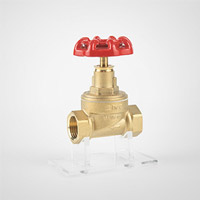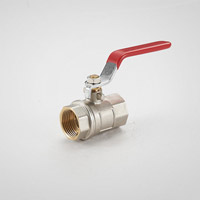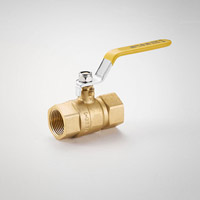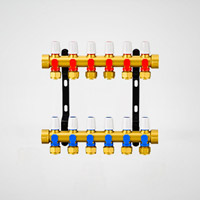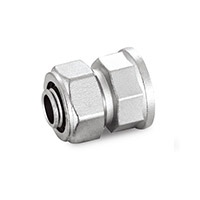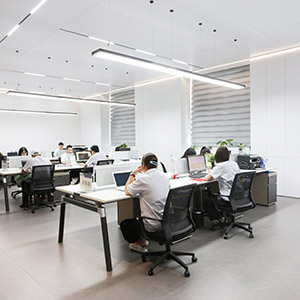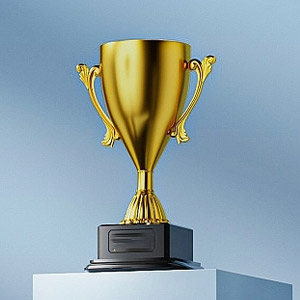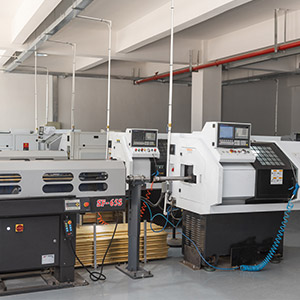Water-saving water meters are coming to an end
 Sep 14, 2023|
Sep 14, 2023| View:346
View:346Times have progressed, and it is time for highly sensitive water-saving water meters (referred to as "water-saving water meters") to come to an end.
High-sensitivity water meters with Chinese characteristics for drip measurement have a distinct effect in preventing dripping and water theft. In the past ten years, they once occupied one-fifth of the market share of residential water meters. The water-saving water meter has a sensitivity of up to 2L/h, which is indeed better than the 4~5L/h sensitivity of a conventional water meter. It can prevent users from dripping and stealing water and reduce losses caused by leaks such as toilet flushing.
As the saying goes: every gain must have a loss. The negative effects brought about by water-saving water meters have been increasingly recognized by the majority of water company users: increased pressure loss, widespread self-traveling of water meters, negative overall measurement efficiency of meters, high costs, etc., which are detrimental to the water company's efforts to reduce production and sales. At present, the proportion of water use has gradually declined.
It is precisely because of the many disadvantages of this type of water meter and the sharp contradiction between supply and demand that the new version of the national water meter standard GBT778-2018 (equivalent to the international standard) once again clarifies that so-called water-saving water meters are not allowed to be used.
The water meter standard clearly does not allow the use of water-saving water meters.
In previous water meter standards, the provisions on water-saving water meters are as follows:
1. The international standard for water meters, ISO4064-1977, does not mention issues related to improving sensitivity of water-saving water meters. The national standard for water meters is also not mentioned, and there are no water-saving water meter products during the period.
2. The water meter standard ISO4064.1-1993 mentions important issues related to water-saving water meters:
The national standard for water meters GB/T 778-1996 (equivalent to the international standard) copied the international standard clauses, "It is prohibited to use acceleration devices that increase the flow rate below Qmin." In the later period of the implementation of this version of the standard, water-saving water meters appeared and breakthroughs were made. Barriers to water meter metering license management have been removed.
3. The water meter standard ISO4064.1-2005 does not mention the issue of improving sensitivity related to water-saving water meters. The national standard for water meters (equivalent to the adoption of international standards) also does not mention relevant content.
During the implementation of the current version of this standard, the production of water-saving water meters is legal according to the spirit of our country's "civilian law" laws and regulations.
4. The water meter standard ISO4064.1-2014 once again mentions the issue of improving the sensitivity of water-saving water meters. The equivalent national standards for water meters, water meter identification programs, and water meter verification regulations that have entered the approval stage also copy this clause:
“It is not allowed to use mobile devices such as spring-loaded flow accelerators to adjust the water flow when the flow rate is less than the minimum flow rate Q1.”
The new national standard for water meters was approved and released in 2018 and will be implemented on January 1, 2019. At that time, current water-saving meters will no longer be allowed to be used during the conversion process to the new metering license. Of course, according to China's national conditions, it is not ruled out that some provinces may break through the barriers, or that individual water meter manufacturers and water companies may use water beyond the license limit.
5. Why do water meter standards not allow the use of accelerators to improve the sensitivity of water meters when the flow rate is less than the minimum flow rate Q1? My personal understanding is that it is a legal issue (identified by Europeans):
The water meter is a meter for fair settlement of trade between the water company and residents. On the side of the water company that charges for water supply services, you can choose a water meter with a larger measurement range in good faith to prevent the loss of small flow water fees, but you cannot take irrational measures in bad faith. method to prevent residents from stealing water.
Our country's national standards for water meters, water meter calibration regulations, and national and provincial and municipal measurement management regulations also stipulate that water meters must not be made too fast. Many regulations that originally stipulated minimum "base" water charges for tap water have basically been abolished. As a user of tap water, it is a moral issue to use the sensitivity of the water meter to drip or steal water.
Comparison of economic benefits between water-saving water meters and conventional water meters
The water meter measures the water volume in the full flow section, including micro flow, small flow, medium flow, large flow, and super large flow. The actual measurement error of the water meter is the integral of the product of the error in each flow section and the water use ratio. According to the water use model analysis of many water companies, residents consume the most water at flows of 300L/h~800L/h, accounting for about 85%. Flows greater than 800L/h generally occur among low-level users with high water pressure; flows below 300L/h mostly occur when active water conservation is in progress; flow rates less than 15L/h are not common and are mainly caused by toilet leaks and Covered leaks such as "capillary leakage" in pipes, leaks in external pipes and joints such as solar water heaters, and dripping "water theft".
It seems that the water-saving water meter has higher sensitivity and covers a larger measurement range. In fact, the measurement range of this type of water meter is equivalent to that of a conventional water meter, and it is only better than the conventional water meter in terms of initial flow rate. However, due to the inherent shortcomings of this type of water meter structure, such as small water passing area, large pressure loss, and negative measurement efficiency, compared with conventional water meters, the above points are obviously better than water-saving water meters, and the energy consumption is lower, which is more in line with Energy-saving requirements advocated by the state.
Therefore, from the perspective of the economic interests of the water department, replacing conventional water meters with water-saving water meters is actually more gain than loss. It is like picking up sesame seeds and losing the watermelon.
Why can a water-saving water meter measure dripping water? The principle is as follows: In the measuring mechanism of a conventional water meter, the water flowing through the water meter passes through a water filter network which is composed of multiple (generally 6 for DN15 water meters and 8 for DN20 water meters) in the impeller box. The strip-shaped water inlet enters the metering chamber tangentially and impacts the rotation of the impeller to record the water volume. In the metering cavity of the dripping water meter, only the hole at the bottom of the water filter is left, and a small hole is added to the edge corresponding to the impeller box. When the flow rate is very small (generally less than 10L/h), the black valve plate (PPO material, specific gravity is about 1.3) sinks to cover the water inlet hole of the water filter, and the water flow can only be injected from the additional small holes on the side and pass through. The tiny flow channels accelerate the water flow and impact the rotation of the impeller. When the flow rate is slightly larger, the water flow opens the black valve piece. At this time, the water-saving water meter measures the same principle as the conventional water meter.
1. The water filter mesh of the water-saving water meter has fewer holes (1/6 of the conventional one), which seriously affects the circulation capacity of the water meter, that is, under the same water pressure condition, the water output of the faucet is reduced. In addition, due to the sensitivity of water-saving water meters to small flow rates, it is easy to cause the water meter to idling. Therefore, a check valve will be installed to reduce the idling phenomenon of the water meter, which further affects the circulation capacity of the water meter.
Experiments show that when the conventional water meter flow rate is the common flow rate Q3, when replaced with a dripping water meter with a check valve, the water output from the faucet is approximately 0.8Q3; the water consumption patterns in residents' homes can be divided into two categories: those with containers, Including washing machines and flush toilets; without containers, including bathtubs and other faucets. According to analysis, household water consumption is almost 50% split between those with containers and those without containers. Under different water outputs, the actual amount of water consumed for bathing, washing hands, washing vegetables, etc. without containers has an impact and is positively related to the flow rate. Due to the different water output caused by conventional water meters and water-saving water meters, there is about a 10% difference in the actual water consumption of residents. Using water-saving water meters does make users use a lot less water, but it is very detrimental to the economic benefits of water supply companies.
Assume that a household with a water consumption of 10m3/month has a 10% difference in water consumption, the water supply cost of the water company is 0.8 yuan, and the tap water price is 2.3 yuan. Then the annual economic income difference of the water company is: 12 months X 10m3 X10% X ( 2.3 yuan - 0.8 yuan) X 50% (no container water proportion) = 9 yuan.
In other words, under normal water supply conditions, for residents who use normal water, replacing the water-saving water meter with a conventional water meter is equivalent to providing more water for each household and providing the water department with an additional profit of 9 yuan/year. Nowadays, residents’ houses are larger and users’ demand for water has increased. We recommend using pipes with a diameter of DN20 or above and DN20 water meters for household installation. It is recommended to install conventional water meters instead of water-saving water meters or small movement water meters. This can not only improve water satisfaction, but also increase the economic benefits of the water company. Why not !
2. The measurement performance of high-quality conventional water meters is slightly positive, which is beneficial to the water company in controlling the gap between production and sales.
Why is the water-saving water meter highly sensitive? It comes from the fact that at a small flow rate, the water flow only accelerates through the lateral holes and impacts the rotation of the impeller. This is a "jet phenomenon".
The jet phenomenon also occurs on regular water meters, but to a lesser extent. When the pipes are scaled, the case is scaled or rusted, or the water filter is blocked by debris (on the side), the water flow rushing into the water inlet of the impeller box will accelerate, resulting in a slight jet phenomenon, and the water meter will be too fast. . According to the testing of water meters in use by many water companies, within a period of 6 to 8 years, the average metering rate of conventional water meters from regular meter factories is about 102%, which meets the requirements of the Measurement Law.
Why doesn't the water-saving water meter get faster and faster? The reason is that there are no meshes around the water filter of the dripping water meter. The water flow from the bottom is 90 degrees to the direction of the impact impeller, so there is no jet effect, but it will Resistance occurs, causing the water meter to go negative.
For a household with water consumption of 10m3/month, assuming that the metering benefit is 102%, the water supply cost of the water company is 0.8 yuan, and the tap water price is 2.3 yuan, then the annual benefit of each household of the water company can be more: 12 months X10m3X2%X2. 3 yuan = 5.52 yuan. Using water-saving water meters will lose this benefit, and even cause negative metering benefits.
The exaggerated anti-theft effect
The high sensitivity of water-saving water meters can indeed prevent water dripping and water theft, which is consistent with national conditions to a certain extent or at a certain stage. However, the anti-theft effect of water-saving water meters has actually been exaggerated.
1. More than 10 years ago, in areas with relatively backward economies, there were indeed many people stealing water. Now, with the development of the economy, people's ideological level has improved, the phenomenon of water dripping and stealing has been greatly reduced, and coastal cities have almost disappeared. According to the comparison between the sensitivity of a water-saving water meter of 2L/h and the sensitivity of a conventional water meter of 5L/h, if you put a bucket at home to collect water, you won't be able to "save" much money in a year. It makes no sense to compare with such high housing prices.
2. The flow rate of the faucet when connected is 5L/h. If water is stolen, multiple adjustments are required to control the flow rate within 3L/h. Calculated on a whole day basis, the metered loss cost of stolen water in one year is:
12 months*30 days*24 hours*0.003m3/hour*0.8m3/yuan=20.74 yuan.
3. Comparing the profit data of conventional water meters with the anti-theft data of water-saving water meters: 20.74/(9+5.52)≈1.4, that is, if one household steals water, it takes 1.4 households to make more to offset it. In other words, if 41% (1/ (1 + 1. 4)) of users drip and steal water, the dripping water meter will have about the same effect as a conventional water meter. But at present, except for a few areas, it is impossible for more than 40% of users to drip or steal water. In vast cities and towns, even if there are individual users who are dripping and stealing water, there is no need to go to war as all users use water-saving water meters.
Bigger troubles caused by water-saving water meters
The forced increase in the sensitivity of water-saving water meters has caused a lot of troubles for water companies, which is mainly reflected in the greatly increased idling ratio of water meters. At the same time, many water companies have fully installed check valves, which has caused invisible economic losses in terms of relatively reduced daily water supply. In addition, the increase in water head loss virtually increases the head of the water pump at the water plant, which increases power consumption and intensifies the leakage to the main pipe network.
1. The reason why the water meter is idling is: there is air before and after the water meter + pressure fluctuation in front of the water meter. Nowadays, buildings are getting taller and taller, and the vacancy rate is getting higher and higher. The probability of air accumulation in household appliances and pipes with containers, such as solar showers and electric showers, is greatly increased. It is common for each household to have one meter and water meters to be installed centrally. The proportion of idling water meters caused by water-saving water meters is much higher than that of conventional water meters. Idling water meters has become a hot spot for complaints from residents and a difficulty in water management.
2. To solve the problem of idling water meters, prevention is the main focus. When designing the water table level,
Pay attention to two distances: 1) The location of each water meter connected to the main pipe is as far away as possible to reduce the mutual influence of water pressure fluctuations; 2) The water meter is kept away from the main pipe to reduce the actual effect of fluctuations through the damping effect of the inner wall of the pipe.
Pay attention to two aspects of exhaust: 1) Install an exhaust valve at the top of the main water supply riser in high-rise buildings to discharge the air in the pipe in time; 2) Household appliances with containers for residents should be exhausted automatically or regularly.
Pay attention to two key points: 1) High-rise secondary water supply equipment should be equipped with a pressure storage tank; 2) The pressure difference in the control pressure storage tank should be increased, thereby reducing the frequency of starting the water pump to reduce water pressure fluctuations.
3. The water filter mesh area of the dripping water meter is too small, and debris is more likely to block the flow channel. The installation time is slightly longer, which seriously affects the water comfort of residents. The diameter of the small hole used for jetting is about 2.5mm. It will usually be blocked in two or three years, and the actual dripping effect will not be maintained for a long time.
4. Check valves come in many forms. Try to choose check valves produced by professional manufacturers with large flow capacity.
If you choose a check valve with large water resistance and weak flow capacity, and thus need to increase the water supply pressure to meet residents' water needs, the loss will be even greater. Pipeline leakage is related to water pressure, L=P1.15, the higher the water pressure, the more leakage; water supply and electricity charges are related to water pressure, 4kwh/1000m3/m, the higher the water pressure, the more electricity is consumed.
Summary
The new water meter standard GB/T 778-2018 and water meter calibration regulations JJG 162-2018 will no longer allow the use of drip metering water meters with water flow acceleration devices. According to the normal approach, there will be no measurement license for water-saving water meters.
From the perspective of economic interests of water companies, the visible and invisible benefits of conventional water meters are far greater than those of water-saving meters. Conventional water meters have a long service life, fewer complaints from residents, and are cheap, which helps reduce the management burden of the water department. For water companies that are still using water-saving water meters, it is time to consider using conventional water meters. This is the best choice as it is both law-abiding and economically beneficial.



